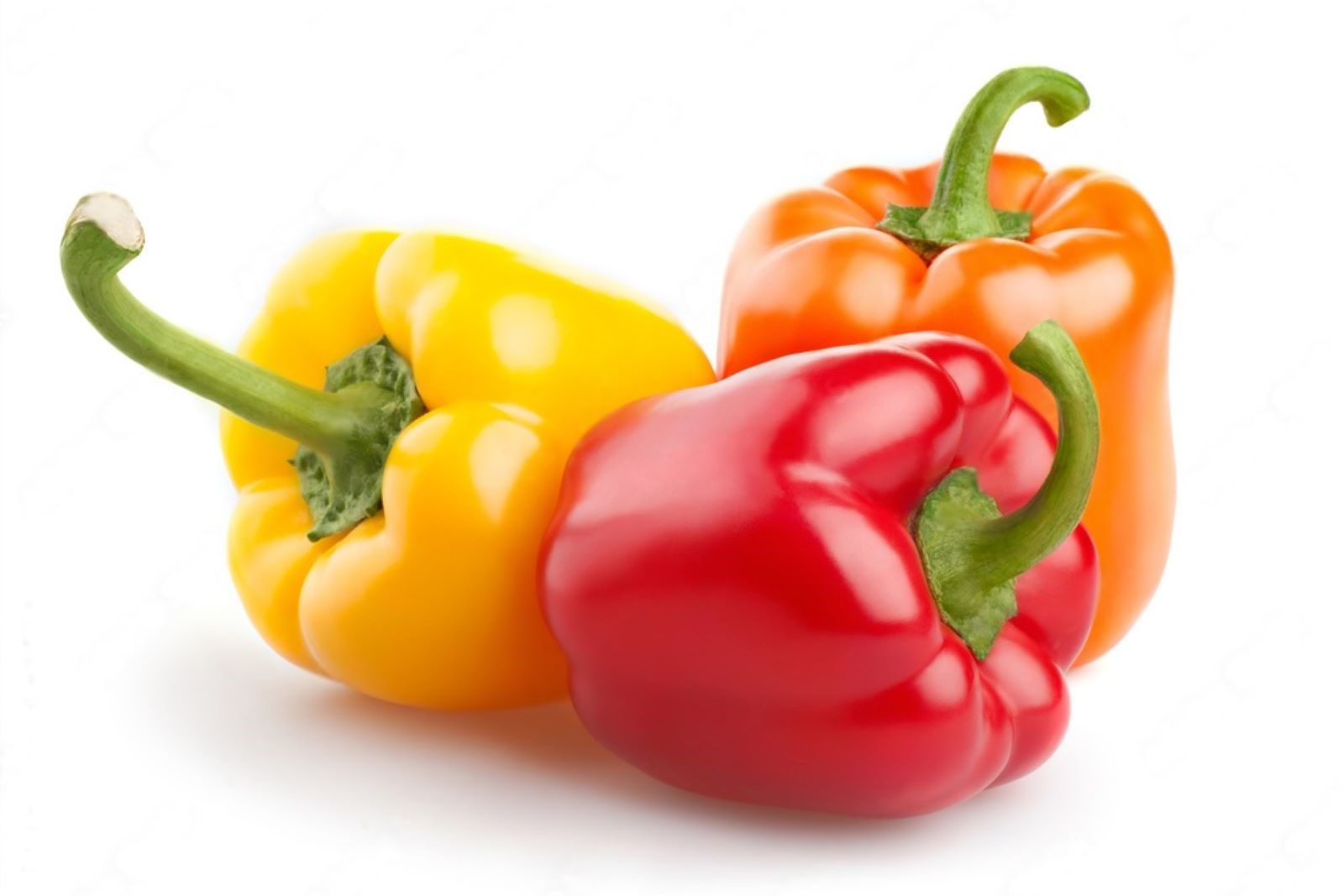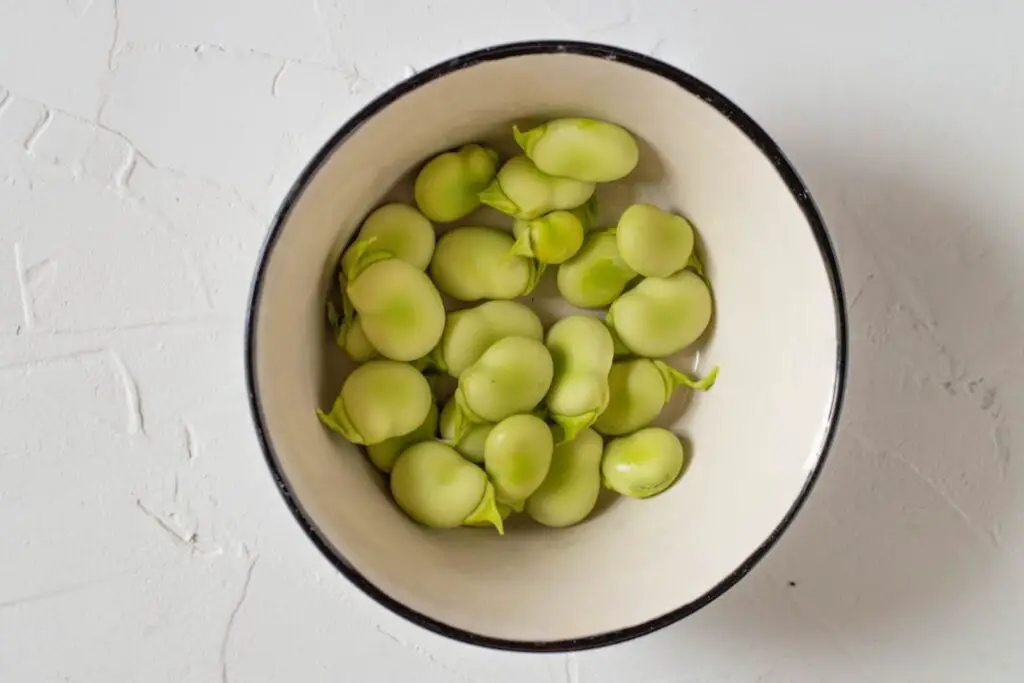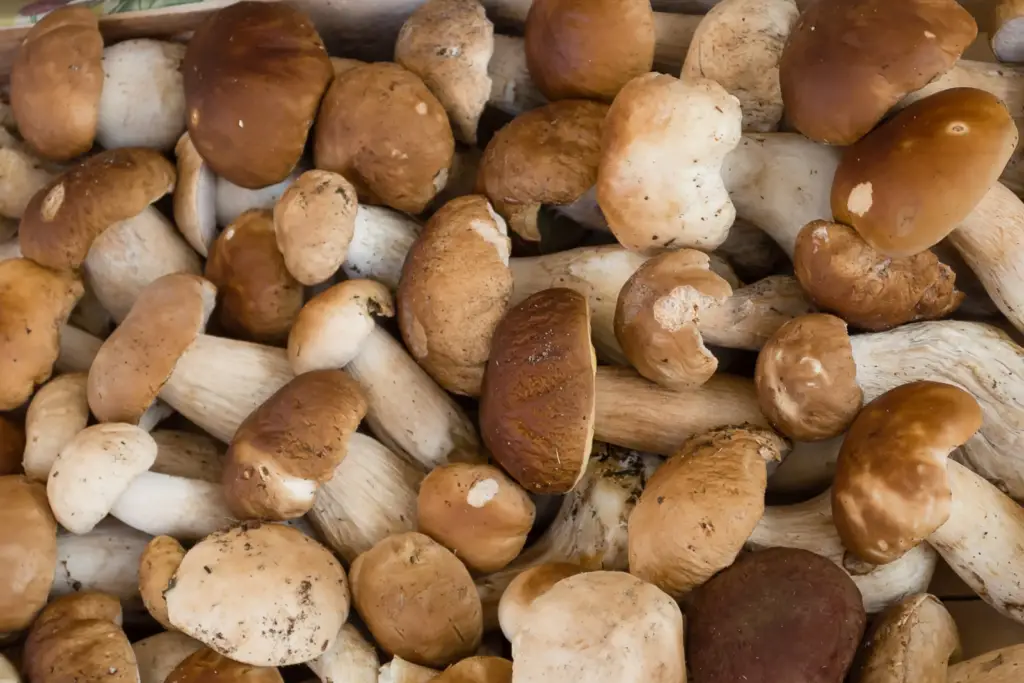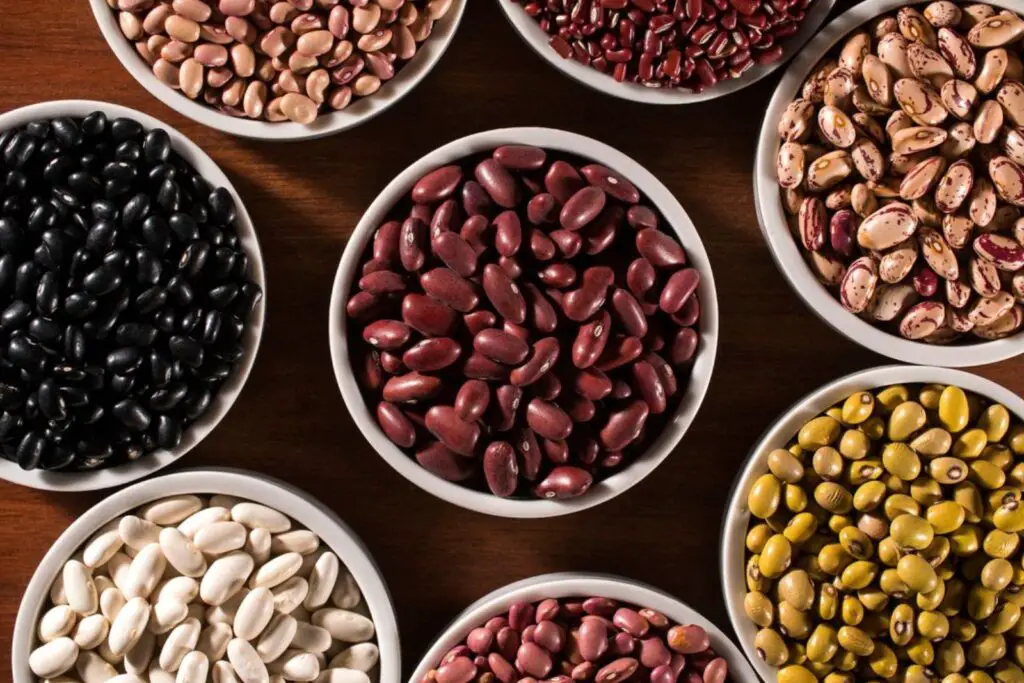
Sweet bell peppers, with their vibrant colors and sweet flavor, are a versatile and delightful addition to a wide range of dishes. Whether red, yellow, orange, or green, these bell-shaped peppers offer a refreshing crunch and a burst of sweetness that elevates the taste of both raw and cooked meals. From fresh salads and salsas to savory stir-fries, soups, and stuffed pepper dishes, sweet bell peppers bring a delightful touch of color and flavor to our culinary creations. However, when bell peppers are in abundance during their peak season or when purchased in larger quantities, it can be challenging to use them all before they start to lose their freshness. Freezing sweet bell peppers becomes a practical and efficient method to preserve their vibrant colors, crunchy texture, and sweet taste, ensuring that each pepper retains its natural goodness and enhances your meals with a burst of color and flavor, even when fresh bell peppers are not readily available or when you wish to enjoy these delightful vegetables at your convenience. In this guide, we will explore the best practices for freezing sweet bell peppers, allowing you to savor their versatility and elevate your culinary creations with the essence of these delightful peppers, whenever you desire, without the need for a fresh purchase or harvesting from your garden.
Here are the simple steps to freeze sweet bell peppers:
Step 1: Select Ripe and Fresh Sweet Bell Peppers
Selecting the right sweet bell peppers is crucial to ensure a successful freezing process and to preserve the best possible quality of the peppers for future use. Here’s why it’s important to choose ripe and fresh sweet bell peppers:
- Optimal taste and flavor: Ripe sweet bell peppers have reached their peak flavor and sweetness. They offer a delightful taste and add a burst of natural sweetness to your dishes when used later on. Selecting ripe peppers ensures that you freeze them at their prime, enhancing the overall taste of your frozen meals.
- Firmness and texture: When choosing sweet bell peppers for freezing, look for ones that are firm to the touch. A firm texture indicates freshness, and these peppers are less likely to become mushy or lose their shape during the freezing process. The firmer the peppers, the better they will hold up after thawing.
- Weight and size: Quality sweet bell peppers should feel heavy for their size, indicating that they are packed with moisture and essential nutrients. Heavier peppers are a sign of freshness and a good water content, making them more suitable for freezing.
- Smooth, shiny skins: Examine the skin of the sweet bell peppers carefully. Choose those with smooth and shiny surfaces, as this indicates that they are free from surface damage and have been well cared for. Avoid peppers with wrinkled or dimpled skins, as they might be past their prime and may not freeze well.
- Avoid blemishes and soft spots: Any signs of blemishes, bruises, or soft spots on sweet bell peppers are indications of possible spoilage. These areas can harbor bacteria and lead to quicker degradation, affecting the overall quality of the frozen peppers. By choosing peppers without such issues, you increase the chances of successful freezing and long-term storage.
By taking the time to select ripe and fresh sweet bell peppers, you set a solid foundation for the freezing process. Fresh peppers will freeze more effectively, maintaining their taste, texture, and nutritional value, so you can enjoy delicious and colorful peppers in your recipes all year round.
Step 2: Wash and Prepare the Sweet Bell Peppers
Properly washing and preparing sweet bell peppers is a critical step in the freezing process, as it ensures that the peppers are clean, free from any contaminants, and ready to be stored. Here’s why each part of this step is important:
- Washing under cool, running water: Sweet bell peppers, like any produce, may have dirt, pesticides, or other residues on their surface. Washing them under cool, running water helps remove these impurities effectively. The flow of water helps dislodge any dirt or debris trapped in the crevices of the pepper’s skin. Washing the peppers thoroughly also enhances their safety for consumption after thawing, as any potential surface contaminants are washed away.
- Drying with a clean kitchen towel: After washing the sweet bell peppers, it’s essential to dry them thoroughly. Excess moisture on the surface of the peppers can lead to the formation of ice crystals during freezing, which may negatively affect their texture and quality. Drying the peppers with a clean kitchen towel helps remove any remaining water, ensuring they are as dry as possible before freezing.
- Removing the stem and seeds: The stem and seeds of sweet bell peppers are not desired for most recipes and can be tough and bitter in taste. Removing them before freezing ensures that you have clean and ready-to-use pepper pieces when you decide to use them later on. By cutting off the top part of the pepper, you eliminate the stem, and then scooping out the seeds and membranes with a spoon ensures that you remove all the inedible parts from the pepper, leaving only the edible flesh.
By washing and preparing sweet bell peppers in this manner, you not only enhance the overall cleanliness and quality of the peppers but also make the freezing process more efficient. Clean, dry, and seedless pepper pieces freeze better and maintain their taste and texture during storage. Additionally, removing the stem and seeds saves you time and effort when you’re ready to incorporate the sweet bell peppers into your recipes.
Sep 3: Raw Freezing Method
The raw freezing method is a convenient and straightforward way to freeze sweet bell peppers while preserving their natural texture and flavor. Here’s a step-by-step explanation of how to raw freeze sweet bell peppers:
- Slice, dice, or chop the sweet bell peppers: Begin by preparing the sweet bell peppers according to your preference. You can slice them into rings, dice them into small cubes, or chop them into larger pieces, depending on how you plan to use them in your recipes.
- Arrange on a baking sheet: Take a baking sheet and line it with parchment paper or a silicone baking mat to prevent the pepper pieces from sticking to the surface. Ensure that the baking sheet is large enough to accommodate all the pepper pieces in a single layer without them touching each other.
- Spread the pepper pieces evenly: Lay the sliced, diced, or chopped sweet bell pepper pieces on the prepared baking sheet. Make sure they are spread out evenly and not overlapping. This arrangement allows for better airflow during the freezing process and ensures that the pepper pieces freeze individually.
- Flash-freeze the sweet bell peppers: Place the baking sheet with the sweet bell pepper pieces in the freezer. Flash-freezing involves freezing the peppers quickly at a very low temperature. This process prevents ice crystals from forming too large and helps maintain the peppers’ texture and quality during storage. It also prevents the pieces from sticking together in a solid clump, making it easier to remove the desired quantity when needed.
- Transfer to storage containers or bags: Once the sweet bell pepper pieces are completely frozen, usually after 1-2 hours, remove the baking sheet from the freezer. Transfer the individual frozen pepper pieces to airtight freezer-safe containers or resealable plastic bags. Be sure to label the containers or bags with the type of pepper and the freezing date for easy identification later on.
By raw freezing the sweet bell pepper pieces in this manner, you ensure that they remain loose and individually frozen, which simplifies portioning and prevents them from becoming a solid mass. This way, you can take out as much as you need for a particular recipe without having to thaw the entire batch. The flash-freezing process also helps preserve the peppers’ texture and taste, allowing you to enjoy the natural goodness of sweet bell peppers in various dishes throughout the year.
Step 4: Blanching Method
Blanching is a popular technique used to prepare sweet bell peppers for freezing. This method involves a brief cooking process followed by rapid cooling to preserve the peppers’ color, flavor, and texture. Here’s a detailed explanation of how the blanching method for freezing sweet bell peppers:
- Prepare the equipment: To begin the blanching process, you’ll need a large pot, a bowl of ice-cold water (also known as an ice bath), a slotted spoon, and a clean kitchen towel.
- Boil a large pot of water: Fill the large pot with water and bring it to a rolling boil on the stove. The pot should be large enough to accommodate all the sweet bell peppers you plan to blanch.
- Submerge the whole sweet bell peppers: Once the water is boiling, carefully place the whole sweet bell peppers into the pot. Use a slotted spoon to gently lower the peppers into the boiling water. The peppers should be fully submerged in the boiling water.
- Blanch for 2-3 minutes: Allow the sweet bell peppers to blanch in the boiling water for about 2 to 3 minutes. The blanching time may vary slightly depending on the size and thickness of the peppers. Blanching helps inactivating enzymes that can lead to the loss of color, flavor, and texture during freezing.
- Transfer to the ice water bath: After the blanching time is up, promptly remove the sweet bell peppers from the boiling water using the slotted spoon and transfer them to the prepared bowl of ice-cold water. The ice water bath immediately cools down the peppers and stops the cooking process. This step is crucial in preserving the bright color and crispness of the peppers.
- Cool the peppers: Allow the sweet bell peppers to sit in the ice water bath for a few minutes until they are completely cool. You may gently agitate the water to ensure that all parts of the peppers are cooled evenly.
- Drain and pat dry: Once the peppers are cool, remove them from the ice water bath and drain off any excess water. Pat them dry with a clean kitchen towel to remove any remaining moisture.
- Slice, dice, or chop the blanched peppers: Now that the sweet bell peppers are blanched and cooled, you can slice, dice, or chop them according to your preference. The blanching process helps in partially cooking the peppers, making them more pliable for cutting.
- Pack for freezing: Transfer the blanched and chopped sweet bell peppers into airtight freezer-safe containers or resealable plastic bags. Remove any excess air from the bags before sealing them shut to minimize freezer burn. Label the containers or bags with the type of pepper and the freezing date.
By blanching sweet bell peppers before freezing, you ensure that they retain their vibrant color, flavor, and texture. The blanching process also helps eliminate surface bacteria, ensuring food safety during freezing and storage. The blanched peppers will be ready to use in cooked dishes, such as casseroles, soups, and stir-fries, adding a burst of freshness and taste to your meals even during the off-season.
Step 5: Pack the Sweet Bell Peppers for Freezing
After you have prepared the sweet bell peppers using either the raw freezing or blanching method, it’s time to pack them for freezing. Proper packaging is essential to maintain the quality and freshness of the peppers during their time in the freezer. Here’s how to pack the sweet bell peppers for freezing:
- Select freezer-safe containers or bags: Choose airtight containers specifically designed for freezer use or heavy-duty resealable plastic bags. Freezer-safe containers and bags are made of thicker material, which helps prevent freezer burn and keeps the sweet bell peppers protected during storage.
- Portion the peppers: Decide on the portion sizes that suit your cooking needs. Whether you prefer to freeze the sweet bell peppers in smaller or larger quantities, make sure the portions are appropriate for the recipes you’ll be using in the future.
- Fill the containers or bags: Carefully pack the sweet bell pepper pieces into the chosen containers or bags. If you use the raw freezing method, ensure the pepper pieces are individually frozen and not clumped together. For the blanched peppers, make sure they are well-drained before packing to avoid excess moisture.
- Remove excess air: For resealable plastic bags, gently press on the bag to remove as much air as possible before sealing it shut. Removing excess air helps prevent freezer burn, which can degrade the quality of the sweet bell peppers over time.
- Seal the containers or bags tightly: Seal the containers or bags securely to create an airtight seal. If using bags, press out any remaining air while sealing to further reduce the risk of freezer burn.
- Organize in the freezer: Place the packed sweet bell peppers in the back of the freezer, where the temperature remains most consistent. Keep them away from the freezer door, as frequent opening and closing can cause temperature fluctuations.
By properly packing the sweet bell peppers for freezing and removing excess air, you create an optimal environment for preserving their quality and taste. Airtight packaging prevents freezer burn and keeps the peppers at their best for an extended period. With these well-preserved sweet bell peppers in your freezer, you can enjoy the flavors of summer all year round and effortlessly incorporate them into your favorite dishes whenever you desire.
Step 6: Label and Date the Packages
Properly labeling and dating the packages of frozen sweet bell peppers is a crucial step in the freezing process. This simple yet essential task helps you keep track of the contents and ensures that you use the peppers in a timely manner, maintaining their quality and flavor. Here’s why labeling and dating are important:
- Easy identification: As time passes, it can be challenging to remember the contents of each package in the freezer. By labeling each container or bag with the type of sweet bell pepper (e.g., red, yellow, orange), you can quickly identify what’s inside without having to open each package.
- Differentiating pepper varieties: Sweet bell peppers come in various colors, each with its distinct flavor and culinary applications. By labeling the packages with the specific pepper variety, you can select the right type for your recipes, ensuring the best taste and color for your dishes.
- Tracking freezing date: Freezing is a method of preservation, and the quality of frozen foods gradually declines over time. By dating each package, you’ll know how long the sweet bell peppers have been in the freezer. This information helps you prioritize the use of older packages first to prevent any potential loss in quality due to extended storage.
- Avoiding waste: Properly labeled and dated packages allow you to use the sweet bell peppers before they lose their best quality. This reduces the risk of forgetting about them in the freezer and eventually having to discard them due to freezer burn or diminished taste.
- Efficient meal planning: When you know the contents and freezing date of each package, you can plan your meals more effectively. You’ll have a clear inventory of what sweet bell peppers are available and can incorporate them into your recipes accordingly, preventing unnecessary trips to the grocery store.
With clear labeling and dating, you’ll have a well-organized freezer and can confidently enjoy the sweet bell peppers in your recipes, knowing that they have been properly preserved and are at their best quality for your culinary delights.
Step 7: Store in the Freezer
Once you have packed the sweet bell peppers in sealed containers or bags and labeled them appropriately, it’s time to store them in the freezer. Proper storage is essential to maintain the quality, flavor, and nutritional value of the peppers throughout their frozen shelf life. Here’s why and how you should store the sweet bell peppers in the freezer:
- Maintain quality and freshness: The freezer is an excellent tool for preserving the freshness of sweet bell peppers. When stored correctly, the freezing process helps to retain the peppers’ color, flavor, and texture, allowing you to enjoy their goodness even during the off-season.
- Prevent freezer burn: Proper storage helps to minimize the risk of freezer burn, which occurs when air comes into contact with the frozen food, causing moisture loss and deterioration in quality. By ensuring airtight packaging and avoiding excess air in the containers or bags, you reduce the chances of freezer burn on the sweet bell peppers.
- Efficient use of space: Arrange the sealed containers or bags in a way that maximizes the use of available space in the freezer. Avoid overcrowding or squishing the packages, as this can lead to uneven freezing and difficulty in accessing individual portions later on.
- Consistent temperature: The back of the freezer generally experiences the most consistent temperature, as it is less exposed to temperature fluctuations when the freezer door is opened and closed. Storing the sweet bell peppers at the back of the freezer helps maintain a more stable environment for their long-term preservation.
- Preventing cross-contamination: Place the packages of sweet bell peppers away from raw meat, poultry, or other potentially hazardous foods to avoid any risk of cross-contamination. Keep the peppers in a separate section or shelf to ensure food safety.
- Organized freezer space: Creating an organized freezer space makes it easier to locate and access the sweet bell peppers when you need them. You can group similar items together or arrange the packages by freezing date for better meal planning and inventory management.
By storing in the freezer, you can maintain the quality of the frozen sweet bell peppers and confidently incorporate them into your recipes whenever you desire. Regularly check the freezer temperature to ensure it remains at or below 0°F (-18°C) to keep the peppers frozen properly. With well-organized and properly stored sweet bell peppers in your freezer, you can enjoy the convenience of having this flavorful vegetable on hand for a wide range of dishes all year round.
How long can sweet bell peppers last in the freezer?
Sweet bell peppers can last in the freezer for up to 10-12 months if properly stored. To maintain their quality, store them in airtight containers or freezer-safe bags, and label them with the freezing date. Freezer temperatures should be kept at 0°F (-18°C) or lower to ensure optimal preservation.
Other related questions
How do you defrost sweet bell peppers?
To defrost sweet bell peppers, you have several options. The safest method is to thaw them in the refrigerator, allowing for a slow and even thawing process. Alternatively, you can use the defrost setting on your microwave for a quicker thaw, but be cautious to avoid cooking the peppers inadvertently.
Can you refreeze sweet bell peppers?
Refreezing sweet bell peppers is generally not recommended. Once thawed, the texture and quality of the peppers may deteriorate, and refreezing can lead to further loss of taste and nutrition. To maintain optimal freshness, it’s best to use the thawed sweet bell peppers promptly and avoid refreezing them.
How do I know if the sweet bell peppers have gone bad after being frozen?
To determine if sweet bell peppers have gone bad after being frozen, look for signs of freezer burn, such as dry, discolored, or shriveled patches on the peppers’ surface. An off-putting odor or flavor may also indicate spoilage. Additionally, if the peppers appear mushy or have an unusual texture, they might have degraded in quality and should be discarded to ensure food safety.
Can you freeze sweet bell peppers with added oil or butter?
Yes, you can freeze sweet bell peppers with added oil or butter. Freezing sweet bell peppers with oil or butter helps preserve their flavor and texture. Ensure the sweet bell peppers are fully cooled before freezing, and store them in airtight containers or freezer-safe bags to maintain their freshness and prevent freezer burn. Thaw the frozen sweet bell peppers in the refrigerator when needed, and use them in sautés, stir-fries, or other dishes for a delicious and flavorful addition to your meals.
Can you freeze sweet bell peppers that have been roasted or grilled?
Yes, you can freeze sweet bell peppers that have been roasted or grilled. Freezing roasted or grilled sweet bell peppers preserves their flavor and texture, allowing for easy incorporation into dishes later. Ensure the sweet bell peppers are fully cooled before freezing, and store them in airtight containers or freezer-safe bags to maintain their freshness and prevent freezer burn. Thaw the frozen sweet bell peppers in the refrigerator when needed, and use them in salads, sandwiches, pasta dishes, or other recipes for a smoky and delicious touch to your meals.
Can you freeze sweet bell peppers that have been stuffed with other ingredients?
Yes, you can freeze sweet bell peppers that have been stuffed with other ingredients. Freezing stuffed sweet bell peppers helps preserve the flavors of the filling and the peppers themselves. Ensure the stuffed sweet bell peppers are fully cooled before freezing, and store them in airtight containers or freezer-safe bags to maintain their freshness and prevent freezer burn. Thaw the frozen stuffed sweet bell peppers in the refrigerator when needed, and bake or reheat them as desired for a delicious and convenient meal.
Can you freeze sweet bell peppers with added vinegar or pickling solution?
Freezing sweet bell peppers with added vinegar or pickling solution is not recommended. The freezing process can alter the texture and taste of the peppers and the pickling solution, leading to undesirable results. Instead, it’s best to enjoy pickled sweet bell peppers fresh or store them in the refrigerator for short-term preservation. If you wish to freeze sweet bell peppers, do so without the pickling solution to maintain their natural flavor and texture.








